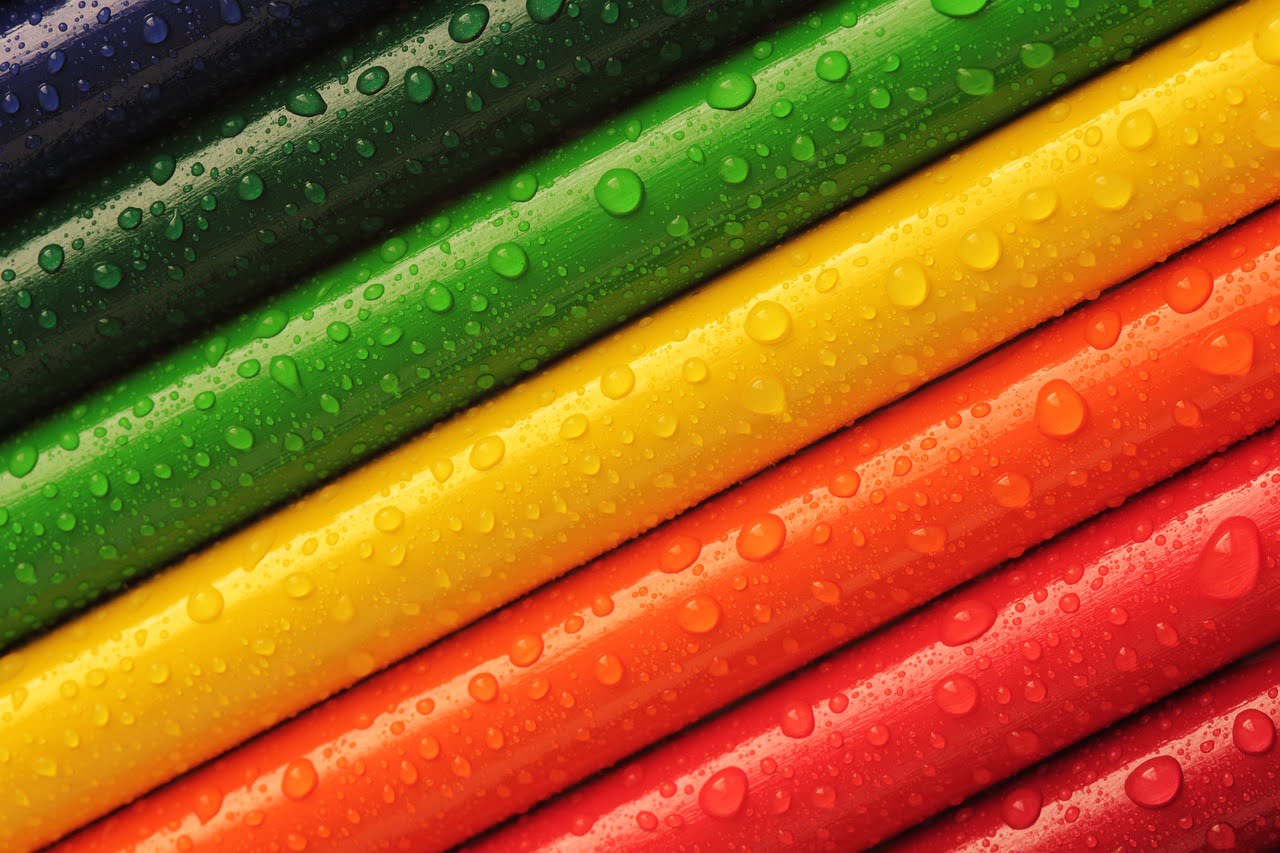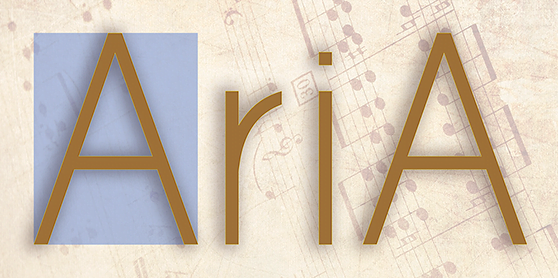What is colour? And why is the world so colourful? What are the main colours? Is it true that red makes bulls go crazy? Let's learn all about colours.
Some say there are 300,000 colours, others even 3 million. In short, there are many colours, but scientists haven't yet determined the exact number because each of us perceives a different number of colours than the other. And women see more colours than men.
Ah, you would think, that's why, for example, blue is blue for men and dark blue, light blue, light blue, light blue, light blue for women...
A world of colours and sensations.
For the ancient Greeks, the main colours were white, yellow, red, green, blue and black. The scientist Isaac Newton, in his experiments in which he divided the white light of the sun using a prism, counted seven colours: red, orange, yellow, green, blue, indigo and violet. Our eyes, however, see mainly three, namely red, green and blue. And scientists say that, in fact, all the other colours can be made up of these three.
For people, colours also have a symbolic meaning: for example, it is not good to be "in a black mood", but it is not good to be "in green" either. The meaning of colours often changes over time: these days, people get married in white and once wore red. And keep in mind, things can change if you go to another part of the world: in Asia, white is the colour of mourning, not the colour of women getting married like we do!

What is colour? And how do we see colours?
Humans see colours thanks to the cells in the eye that specialise in this function, the cones. We have only three types of cones: one for frequencies close to red, one for frequencies close to green and one for frequencies close to blue. In fact, some people seem to have a fourth type of cone, but they are in the minority.
The question remains how we can see the world with so many colours. The answer is that the brain does it all. It is in a particular area called the occipital lobe (at the back of the skull) that the information conveyed by the eyes is processed.
Why is the world so colourful?
Which came first - the colours or the eyes to see them? Colours came first! They existed before there were living beings capable of distinguishing them, before there was life on Earth. But today, the world is much more colourful than before. And it is precisely because there are eyes that can see colours.
Does that sound strange? Let's try to think about this detail: flowers have different colours because it serves to attract insects - pollinators. The colour of flowers, in short, serves the plants so that they have a better chance of reproducing. Animal colour also has a reason. There are colours that serve to attract females or males, and colours that serve as camouflage to ambush or flee from predators.
RED
First of all, let's put an end to the story that red makes bulls angry. That's not true: bulls can't see red. But the colour red does excite. It excites us humans!
Just think, standing under red light, even with your eyes closed, makes your heart beat faster, raises blood pressure in your veins and speeds up your breathing. The effects of red don't end there. You will feel warmer in a red room. It's true! Experiments have been done, and it's true.
In Latin, colouratus signi cava means both 'red' and 'coloured', as if to say that a coloured thing is also red. After all, the Colorado River is also called that because it is red!
Red was also the colour of emperors and kings. It lay very well on fabrics and textiles, and required quite special raw materials, such as sea molluscs called murises, or female insects called cochineal (it takes 100,000 insects to make a kilo of paint!).
It is also the colour of bans and errors: where there is red, passage is forbidden, and too many red marks mean that your test has failed.
ORANGE
Orange is a beautiful colour. It is soothing without being too aggressive. It seems to lift one's spirits, to help one communicate. In fact, today it is used very often, even for the walls of homes and offices.
And for a long time it wasn't even a colour. If you think about it, the word 'orange' refers to a fruit tree, and only from a certain point onwards has it come to mean colour: the colour of the orange peel. It's hard to find it in old paintings. It may have been overlooked for a long time.
Many people think it's just a combination of red and yellow. It is: if you mix red and yellow on a palette, you get orange, although artists of antiquity used saffron instead. But to think of it as just a mixture is wrong. When Newton decomposed light using a prism, he found that one of the colours that stood out was exactly orange.

YELLOW
Yellow means warmth and light, and therefore also joy and cheerfulness. Remember that in a psychological study, most people who said they were happy associated this emotion with the colour yellow.
In China, yellow was the colour of the emperor and continues to be the colour of wisdom, power and wealth. On the other hand, it is the colour of gold. And the sea of dollars into which Scrooge McDuck dives is entirely yellow.
But for a long time, yellow also had a negative meaning: it meant betrayal, it was the colour of liars. Judas was often painted in a yellow robe.
GREEN
When one thinks of green, one thinks of nature, ecology, meadows and forests. Today, green is used to refer to nature, but it is a recent innovation. Fifty years ago, it would never have occurred to anyone.
However, green has always been an important colour. Since the time of Aristotle, the great Greek philosopher, it has always been on the list of primary colours. This is fair enough, as, among other things, it is one of the three colours our eye sees best, along with red and blue.
If you like to draw or paint and are familiar with the difference between warm and cool colours, you'll be interested to know that green is somewhere in between. It's similar to warm. And if you take the spectrum of colours that our eye sees, you'll find that green is right in the middle between these extremes, like a true balancer.
But why exactly is it okay to cross the street with green? There is no clear explanation. Perhaps it is because it is a complementary colour to red, that is, in a way, its opposite.
BLUE
In the ranking of favourite colours, blue tops the list, although women still seem to prefer green. Curiously, this colour is not perceived by babies; they see it as grey.
Blue is thought to have been discovered by the ancient Egyptians, for whom it was the colour of good fortune accompanying souls into the afterlife. The Greeks, on the other hand, did not even say that the sea was blue. In fact, the term 'blue' comes from German and 'azure' from Arabic.
It is a very popular colour today, and anyone who wants to convey a message of peace and tranquillity uses it. Think about it: the United Nations flag is blue, so is the flag of the European Union. Then it was discovered that blue is actually a useful colour: not only is it relaxing, but it also enhances creativity.
If you want to get ideas, you'd better be in a blue room or try to have blue things around you. It's not hard, because it's probably the most popular colour for clothing. Just think of the success of blue jeans, which have been around for 150 years. Pity those inhabitants of equatorial regions who don't have the word 'blue' and probably don't even see the colour blue.

VIOLA
What colour is purple? Violet is the last of the colours of the rainbow and the colours discovered by Newton that separate white light. Beyond violet we see nothing: Ultra-violet light does not exist for us, but not for some animals, they see it very well. Purple, like orange, was first an object (in this case an hour) and then became a colour.
It comes after blue in the colour spectrum, but while everyone loves blue, many people hate purple (and brown!). Why? Perhaps because to us it's the colour of mourning. Maybe because when purple gets so dark it seems almost black. That's why it's also considered the colour of melancholy and sadness.
However, even superstitious people avoid it. And in Japan, it is forbidden to use it at weddings. The Navajo Indians, on the other hand, love it and consider it the colour of happiness. Purple certainly made a young English chemist, William Perkin, happy. In 1855 he discovered a way of producing the colour purple from coal. At the age of 18, William got rich: the colour was very expensive and he opened a factory where fabrics could be dyed cheaply in this colour.
WHITE
Let's be clear: white is also a colour. Even if Newton was able to separate white light into other colours, it does not mean that this colour does not exist. Nor is it true that white denotes something that does not exist. The colour white is perfectly visible! Just look at the chalk on the blackboard. If anything, it's our language that uses it this way: if you haven't slept, you've had a "blank night", if you haven't written anything, you've left a "white sheet".
White is first and foremost the colour of purity: newborn babies are dressed in white, even for baptisms; women get married in white dresses. In the East, on the other hand, white is the colour of sadness and mourning.
The white flag has been used for centuries to call for an end to hostilities: since the Hundred Years' War (1337-1453) between the French and the English.
BLACK
Is it a colour or not? We perceive an object as black if it retains all colours and transmits none. In this sense, those who think it should not be considered a colour are right: if there is black, then there is no colour.
But absolute black is very difficult to achieve. There are hundreds of types of black (just like white). The blackest one, which has been patented, absorbs 99.65% of light, so our eye cannot perceive anything when looking at it. In all other cases, when using a black colour pen or cardboard, something can be seen.
Black evokes respect and fear: the referees, police officers (and football referees) are dressed in black. Zorro and Diabolik, who are the rebels, are also in black. A black cloak for the evil wizard is also definitely necessary.
It's also the colour of elegance, ask your mother: a little black dress always makes a good impression. Although black is also worn to funerals.


 and then
and then 
